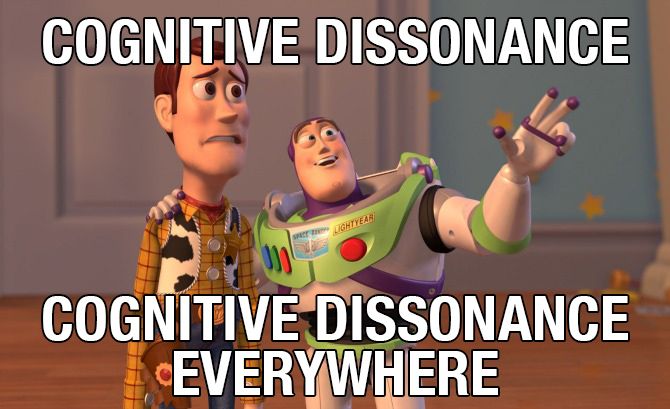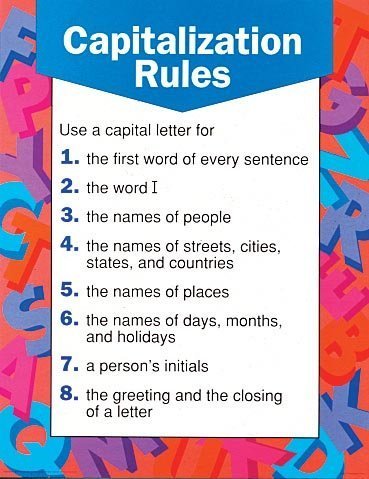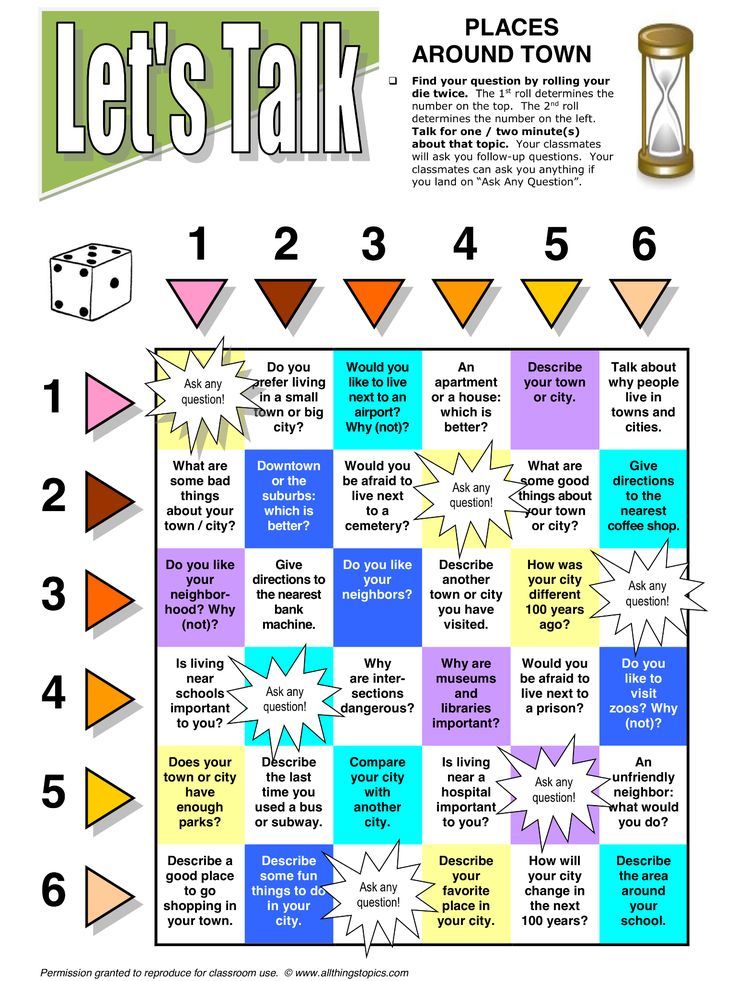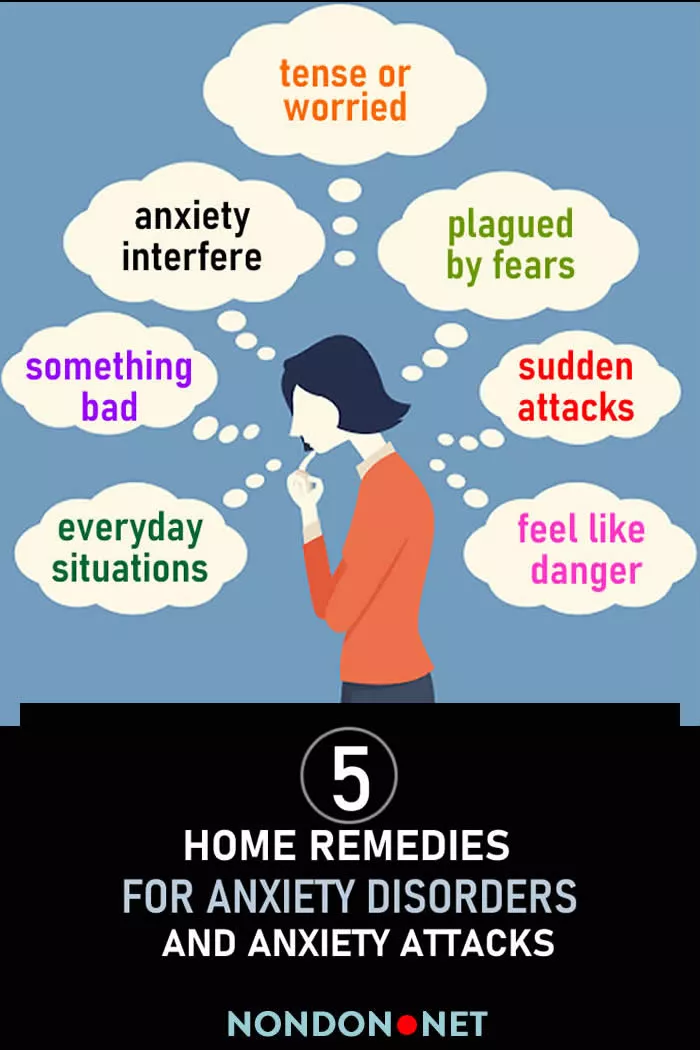Signs of autism in infants 4 months
Early signs of autism in infants, toddlers, and preschoolers
According to the Centers for Disease Control and Prevention (CDC), about 1 in 54 school-aged children in the United States has been identified with autism spectrum disorder (ASD), a condition characterized by difficulties with social interactions and behavioral challenges. Boys are four times more likely to be diagnosed with autism than girls, as girls may be more likely to have symptoms, such as social impairment, that are harder to detect than behavioral issues.
The importance of early diagnosis
The American Academy of Pediatrics (AAP) joins with the CDC in recommending screening at a young age to ensure early intervention and better developmental outcomes. In the U.S., most autism costs are for an adult rather than child services ($175–196 billion for adults versus $61–66 billion for children). However, with early diagnosis and treatment, the cost of care over a lifetime can be reduced by two-thirds.
Checklists of autism signs
Through its “Learn the Signs. Act Early” campaign, the CDC aims to raise awareness of the early signs of developmental delay, including autism. Through milestone checklists, the CDC provides information on what most babies do at different ages and which signs parents should discuss with their child’s doctor. Milestones are included for children 2 months to 5 years of age, reflecting a belief among researchers that even infants may show early autism signs.
Early signs of autism or other developmental delays include the following:
- 2 months: Doesn’t respond to loud sounds, watch things as they move, smile at people, or bring hands to mouth. Can’t hold head up when pushing up while on tummy.
- 4 months: Doesn’t try to get things in reach, respond to sounds around him, make vowel sounds (“ah,” “eh,” “oh”), roll over in either direction or laugh or squeal. Pays no attention to caregivers. Has difficulty getting things to his mouth.
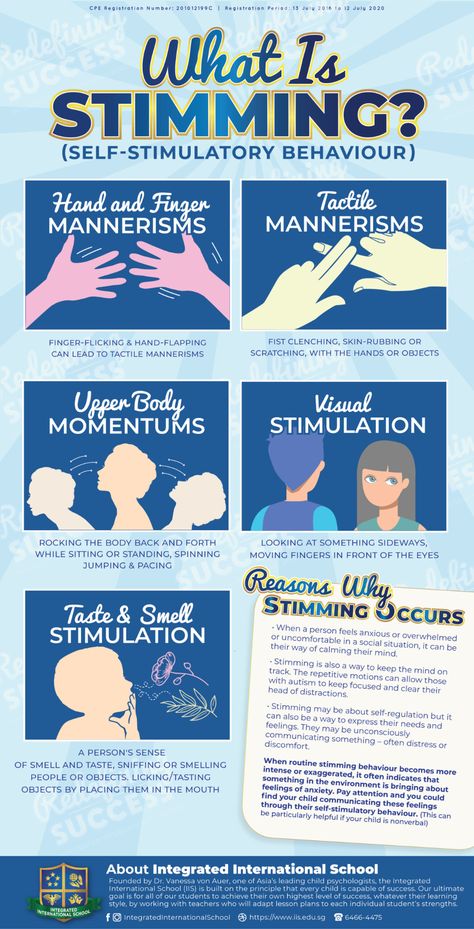 Seems stiff or floppy.
Seems stiff or floppy. - 6 months: Doesn’t watch things as they move, smile at people, “coo” or make sounds, bring objects to her mouth, or push down with her legs when her feet are placed on a hard surface. Can’t hold head steady. Has trouble moving one or both eyes.
- 9 months: Doesn’t stand with support, sit with help, babble (“mama,” “baba,” “dada”), play games with back-and-forth interaction, transfer toys from one hand to the other, respond to own name, look where you point, or seem to recognize familiar people.
- 12 months: Doesn’t crawl, stand with support, search for things he sees you hide, say simple words like “mama” or “dada,” gesture (waving hands, shaking head), or point to objects of interest. Loses skills he once had.
- 18 months: Doesn’t point to objects of interest, copy others, gain new words, use at least six words, or notice or mind when a caregiver leaves or returns. Doesn’t know what to do with familiar objects (like a spoon or a brush).
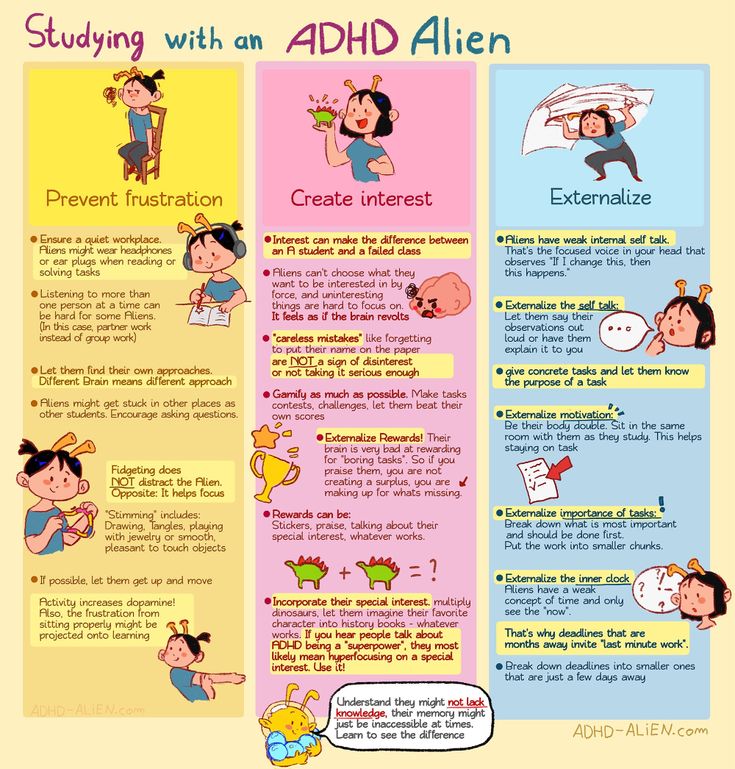 Loses skills.
Loses skills. - 2 years: Doesn’t use two-word phrases (“drink milk”), copy actions or words, follow simple instructions, or walk steadily. Loses skills.
- 3 years: Falls a lot. Has trouble climbing stairs. Can’t work simple toys. Doesn’t speak in sentences. Drools or has unclear speech. Doesn’t play pretend or make-believe. Doesn’t want to play with toys or other children. Doesn’t make eye contact. Continues to lose skills.
Next steps
You can review all major milestones through the first year here for more information on typical infant development.
An additional tool for parents of infants and toddlers who are concerned and want to review their child’s development is a free series of age-specific online books, including Baby’s Busy Day – Being One is So Much Fun!, Where is Bear? – A Terrific Tale for 2-Year-Olds, and Amazing Me: It’s Busy Being 3! Each book features an appealing character engaging in activities typical of a child at that age and demonstrating appropriate skills.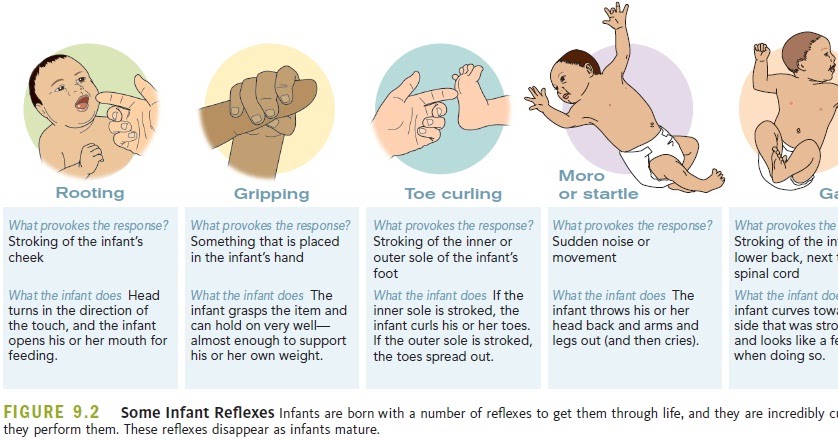 Prompts alongside the text ask parents to reflect on how their child is doing with these skills, and a milestone checklist appears at the end of the book and on the accompanying website.
Prompts alongside the text ask parents to reflect on how their child is doing with these skills, and a milestone checklist appears at the end of the book and on the accompanying website.
Milestone markers are guidelines, not hard-and-fast rules; all children develop at their own pace. But early intervention is crucial in helping children with autism get the help they need. Your child’s healthcare provider will assess her growth at each well-visit to ensure she’s developing well physically, mentally, and behaviorally. But if you have concerns about your child’s development during the course of any year, immediately make an appointment with her healthcare provider.
Last updated December 6, 2021
Signs, diagnosis, and next steps
Autism, or autism spectrum disorder (ASD), is a developmental condition that can affect how a person behaves, interacts, and communicates. Some early indicators of autism in babies and young children may include avoidance of eye contact, delays in language development, and limited facial expressions.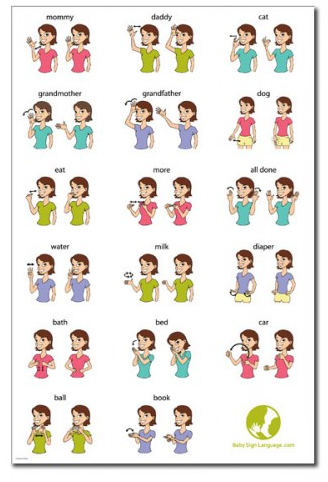
Healthcare professionals use the term ASD because autism is a spectrum, meaning that it can cause a variety of behaviors and characteristics that range in severity.
They refer to it as a developmental disorder because it usually develops before a person is 2 years old. However, a person can receive a diagnosis of ASD at any age.
ASD is not an illness, and it does not require treatment. A person may find it easier to manage some characteristics of ASD with support or therapies, though.
Having support from an early age can help improve an autistic child’s development, language, and interactive skills.
This article lists the possible early signs of ASD and explains what steps to take following a diagnosis.
In general, a baby will show signs of ASD between the ages of 12 and 24 months. However, signs of ASD in babies can develop outside of this age range.
The Centers for Disease Control and Prevention (CDC) note that a baby can show signs of ASD from the age of 9 months.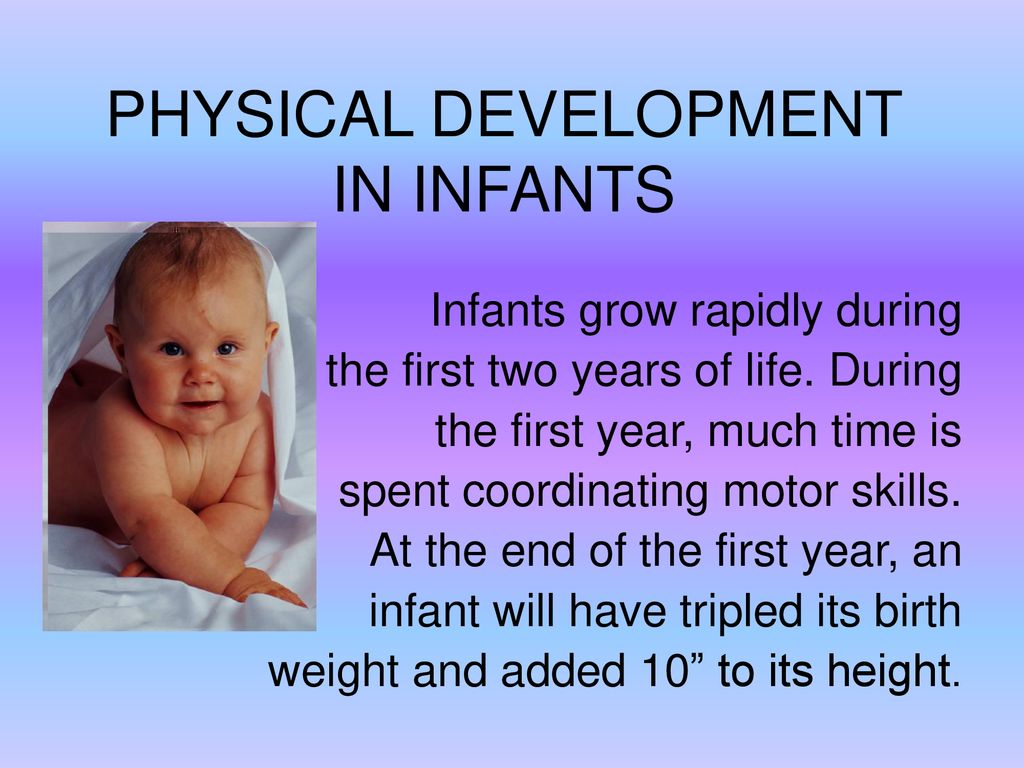 However, the Autism Science Foundation states that early signs of ASD may appear in babies as young as 2 months of age.
However, the Autism Science Foundation states that early signs of ASD may appear in babies as young as 2 months of age.
Diagnosing ASD is challenging. One reason for this is that the condition presents differently in all individuals.
Babies can reach developmental milestones at slightly different ages, even when they do not have any health conditions. However, some developmental differences indicate that a baby may be autistic. These include:
Lack of eye contact and joint attention
Joint attention refers to two people sharing a focus on the same object after one alerts the other to the item using verbal or nonverbal cues. For example, a parent or caregiver will point to a toy or tell the child about it, and the child will then look at the toy. Joint attention is an important way of connecting and interacting with other people.
According to a 2016 article in PLOS ONE, from about 9 months old, a baby should be able to make regular eye contact and share focus with their caregivers.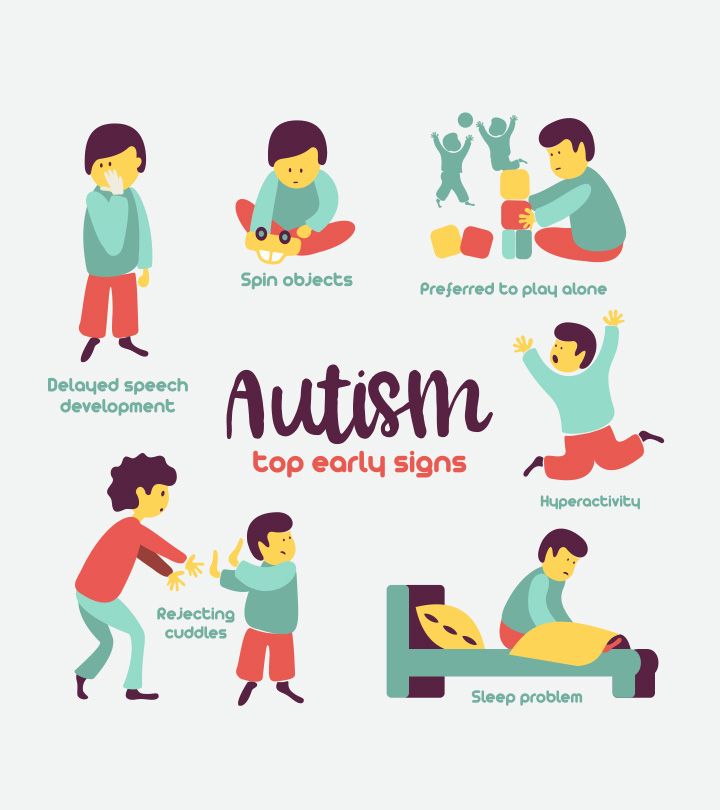
Autistic babies can find it challenging to pick up on these social cues and may ignore the person or the object that they are pointing out.
Not responding to their name
According to the CDC, a baby should be able to respond to their name from about 6 months old.
However, a 2017 study found that babies developing ASD often do not respond to their name at 9 months old.
Difficulty with nonverbal communication
The CDC states that from around 9 months old, a baby should be able to point things out. At this age, they should also be able to copy the sounds and gestures of other people.
Research from 2019 found that at 18 months, autistic children pointed and gestured much less than children who were not autistic. A lack of nonverbal communication could indicate delays in language development.
Limited facial expressions
By the age of 4 months, a person can expect a baby to be able to copy facial expressions, such as smiling or frowning.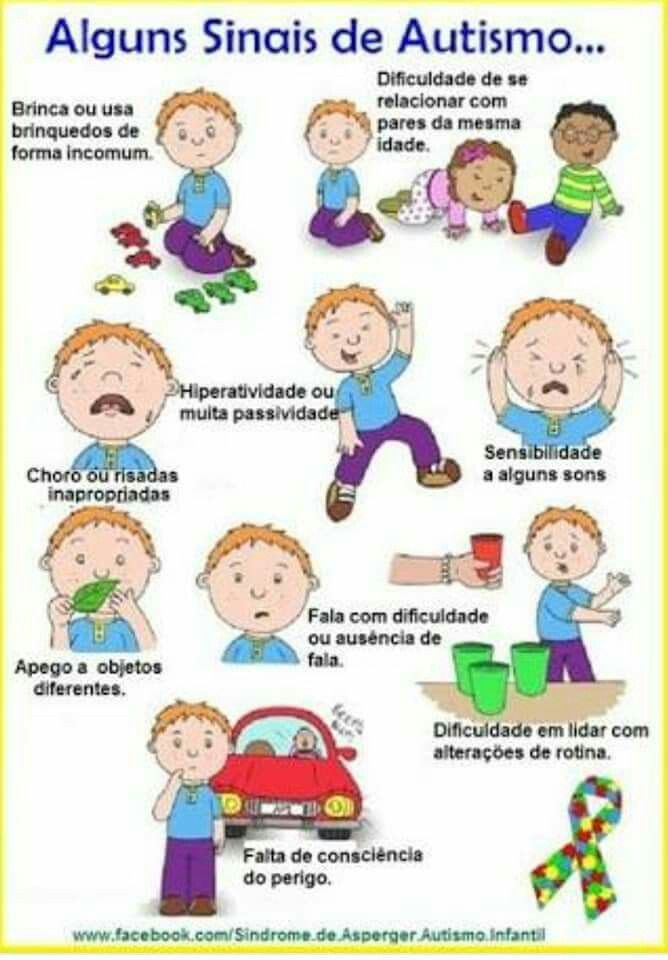 A baby should also be able to smile spontaneously and let others know if they are sad. At 6 months, a baby should recognize other people’s emotions and be able to respond to them.
A baby should also be able to smile spontaneously and let others know if they are sad. At 6 months, a baby should recognize other people’s emotions and be able to respond to them.
An autistic baby, on the other hand, may not respond to a smile or other facial expressions. They may also respond to certain expressions or experiences with facial expressions that are inappropriate.
Delays in language development
By the age of 1 year, a child should be able to say one to three single words and try to copy words that other people say.
The National Institute on Deafness and Other Communication Disorders notes that autistic children may have trouble developing language skills and understanding what other people say. According to March of Dimes, about 40% of autistic children do not speak at all.
Regression
Regression is where a baby starts to lose skills they previously had, such as verbal communication or social behaviors. A study from 2015 found that close to one-third of autistic children lose some skills around preschool age.
According to the Autism Science Foundation, a person should talk with a doctor if a 2-month-old infant is not doing the following:
- responding to loud sounds
- watching things as they move
- smiling at others
- bringing their hands to their mouth
- holding their head up when lying on their tummy and pushing up
A person should talk with a doctor if a 4-month-old baby is not doing the following:
- holding their head steady
- making sounds
- bringing objects to their mouth
- pushing down with their legs when a parent or caregiver places their feet on hard surfaces
- moving both eyes in every direction
It is advisable to seek medical advice for a 6-month-old baby who appears unusually floppy or stiff or who is not:
- reaching for objects
- displaying affection for their parents or caregivers
- responding to sounds around them
- making vowel sounds
- laughing
A person can expect a healthy 9-month-old baby to be:
- looking to where a person is pointing
- responding to their name
- babbling
- recognizing people
- sitting without help
- playing back-and-forth games
- putting their weight on their legs, with support
- transferring toys between their hands
A person should talk with a doctor if a 12-month-old infant is showing signs of regression or is not:
- pointing to objects
- gesturing, such as waving or shaking their head
- saying single words, such as up, bye, or juice
- crawling
- standing, with support
ASD is a possibility if an 18-month-old child is losing skills that they previously had or is not:
- pointing to show things to others
- recognizing familiar objects, such as spoons or cups
- imitating others
- using at least six words
- showing an ability to learn new words
- reacting when a parent or caregiver leaves or comes back
- walking
If a person thinks that their baby may be autistic, they should contact a doctor.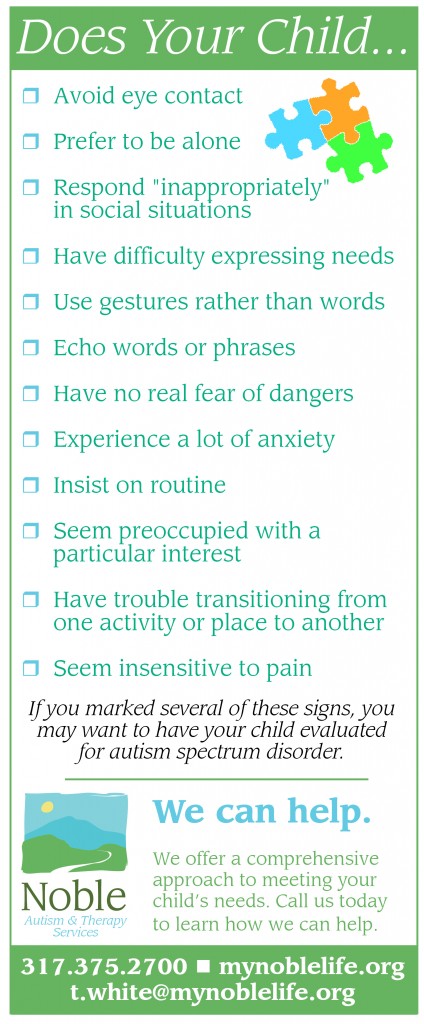 The doctor will begin the diagnosis by observing and evaluating the baby’s behavior.
The doctor will begin the diagnosis by observing and evaluating the baby’s behavior.
If the doctor suspects ASD, they may recommend further testing.
The CDC notes that 1 in 54 children in the United States have autism.
Developmental delay screenings involve a doctor observing the baby. The doctor will also ask the parent or caregiver questions about the baby’s behavior.
The American Academy of Pediatrics (AAP) recommends that babies have a routine development assessment at all visits and developmental delay screenings when they are 9, 18, and 24 or 30 months old. A doctor should perform ASD-specific screenings when the baby is 18 and 24 months old.
Although certain developmental delays can be concerning, babies develop and grow at their own pace. It can, however, be helpful to have an indication of what milestones a baby should be reaching and when.
If a person would like to track how their baby is developing, the CDC offers a list of developmental milestones. The CDC also has a milestone tracker app, which includes a checklist, tips, and advice.
The CDC also has a milestone tracker app, which includes a checklist, tips, and advice.
Kimberly DrakeLIVING WITH AUTISM
Transitions and growth
After a long and arduous diagnostic process, I shifted from wondering if he had autism to searching for the services he needed to learn, grow, and manage autism-related challenges.
Read full article
Was this helpful?
ASD is a developmental condition, and it is possible for a baby to be autistic. The sooner a healthcare professional diagnoses ASD, the sooner the child can receive any necessary support.
A person can look for various signs if they think that their baby is autistic. Although healthcare professionals typically diagnose ASD in children below the age of 2 years old, a person can first show signs of ASD at any age. The AAP recommends that babies receive regular screening for ASD and other developmental conditions.
Anyone who notices signs of autism in a child in their care should talk with a doctor.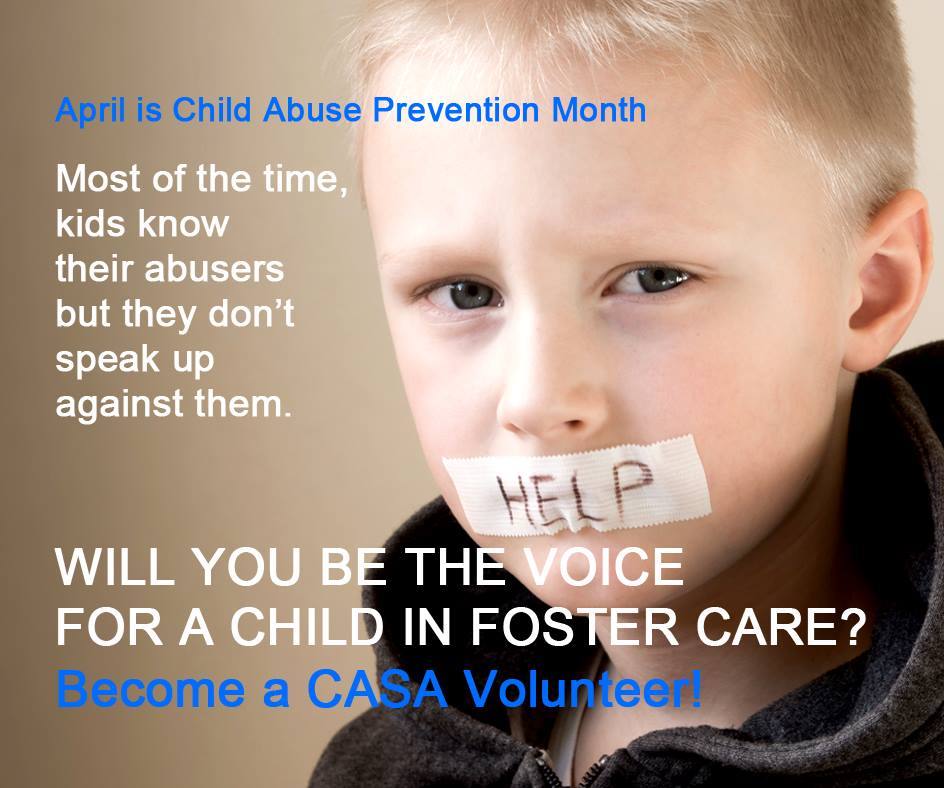
Early signs of autism in children
Children's Medical Center of Neurology and Pediatrics offers you a service - diagnosis of early autism in children. Our experts have many years of experience and excellent reviews!
Signs of early autism in children can manifest themselves quite differently, but the disease and symptoms are individual. In some cases, the early signs of autism can even be confused with the good behavior of the baby: he is undemanding, calm and independent. Therefore, you should pay attention to whether your child corresponds to the main stages of development of peers. There are a number of markers that need to be highlighted.
Signs of early autism in children under 1 year old:
- By 6 months the child does not show obvious emotions, even meeting with his mother does not cause him to change his emotional background.
- By 9 months, the baby does not try to babble, does not look for visual contact, it may seem that he is not looking into your eyes, but through you.
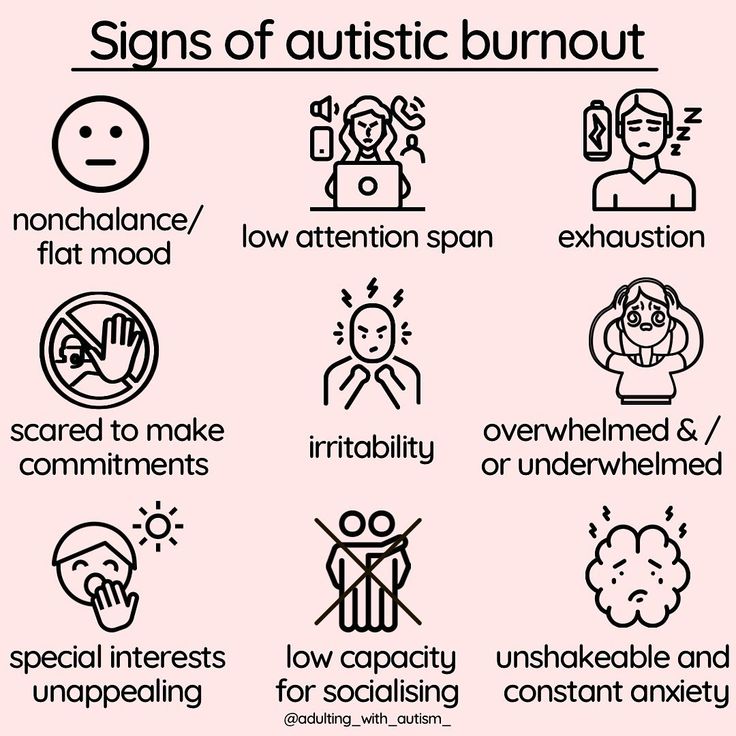 Does not respond to his name, while in other situations does not show hearing problems. The child does not attempt to initiate or respond to the mother's hugs. He doesn't even like tactile contact.
Does not respond to his name, while in other situations does not show hearing problems. The child does not attempt to initiate or respond to the mother's hugs. He doesn't even like tactile contact. - By the age of 1 year, a delay or lack of development of spoken language is clearly noticeable, not accompanied by attempts to compensate for it with other forms of communication, for example, gestures.
The disease itself, as a rule, manifests itself before the age of two, it is at this age that a diagnosis can be clearly made. However, the sooner we start treatment, the more chances for a fruitful result!
Signs of early autism in children 2 years old:
- The child does not point to objects that could interest him in the world around him. At the age of 14-16 months, ordinary children actively use sign language.
- Does not understand simple one-step instructions, such as asking to show where a block or toy is.
- The kid does not use speaking skills, there are often cases when the child goes into some kind of regression, i.
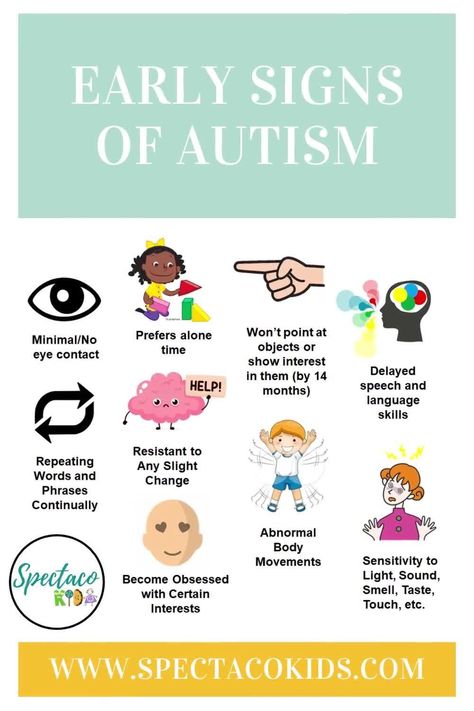 e. before that, he tried to show verbal activity and suddenly begins to lose verbal skills. Similar cases of regression occur in the social field, as if the child withdraws into himself.
e. before that, he tried to show verbal activity and suddenly begins to lose verbal skills. Similar cases of regression occur in the social field, as if the child withdraws into himself. - Quite often the child limits his motor activity.
- Shows emotions in a way that others do not understand, for example, may laugh or cry inappropriately.
Signs of early autism in a child of 3 years old:
The older the child becomes, the stronger the symptoms, here we can already talk about the current picture of the disease.
- During everyday play, a child with early autism tends to focus on one object or detail, i.e. he may be interested only in the wheel of the machine. Therefore, he does not carry the machine on the carpet, but simply turns its wheel with his fingers. Thus, all games look one-sided, they are devoid of creativity and fantasy.
- Interested in unusual objects or activities.
- Such a child likes the same type of movements, for example, flipping through a book, playing with a switch, turning the lights on and off in the room repeatedly.
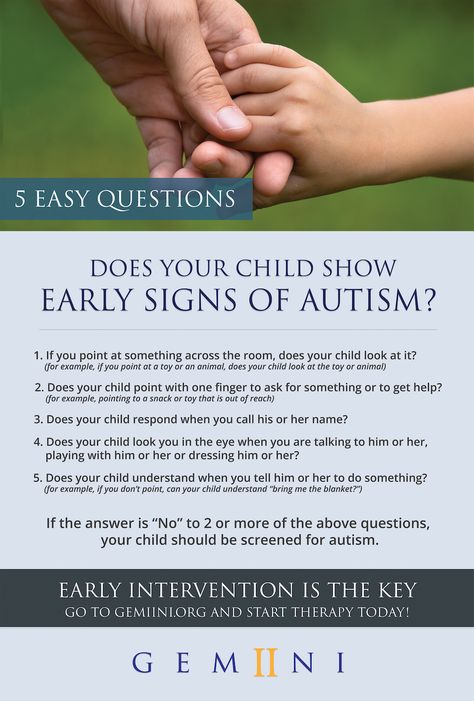 He spends a lot of time arranging objects in a certain order.
He spends a lot of time arranging objects in a certain order. - He does not understand games related to imitation, he will not participate in pretend play, artistic creativity is not for them.
- They are not interested in games with their peers, they prefer to spend time alone.
- Such a child often uses stereotyped behavior, any deviation from the usual state of affairs can cause a violent reaction, up to hysteria. For example, a simple trip to the store or a walk along a new route can lead to the above described explosion of emotions. The same applies to eating habits, the baby can react sharply to a new dish, refuses to eat many foods.
- Is overly sensitive to various types of external stimulation, for example, external noise, unfamiliar smell, even new clothes or some kind of accessory on it can affect the child's mood. Unexpectedly reacts to the manifestation of painful or irritating factors, from a sharp sound, he may panic, while some real pain syndrome may go unnoticed.

- Also, the baby is selective about fears, he can be afraid of an ordinary, everyday household item and at the same time not be afraid of objects that can bring a real threat to health or life.
- Another very obvious manifestation is trouble sleeping. Such a child falls asleep heavily, his sleep is interrupted and disturbing.
- A child with early autism is prone to repetitive behavior.
- Prone to changes in emotional background and behavior.
All medical and nursing staff of our clinic are highly qualified and professional. All our doctors are constantly practicing specialists, doctors of the highest category, doctors of sciences, associate professors. Thanks to our working methods, you can be sure that you are in a professional clinic, which means that we guarantee the result.
Also read about the disease: autism in children.
Autism in children - signs, symptoms, causes and diagnosis of childhood autism in the clinic "SM-Clinic" for children and adolescents
The clinical manifestations of childhood autism are variable: in some cases, the symptoms may resemble mild forms of depression, in others they may resemble serious mental disorders.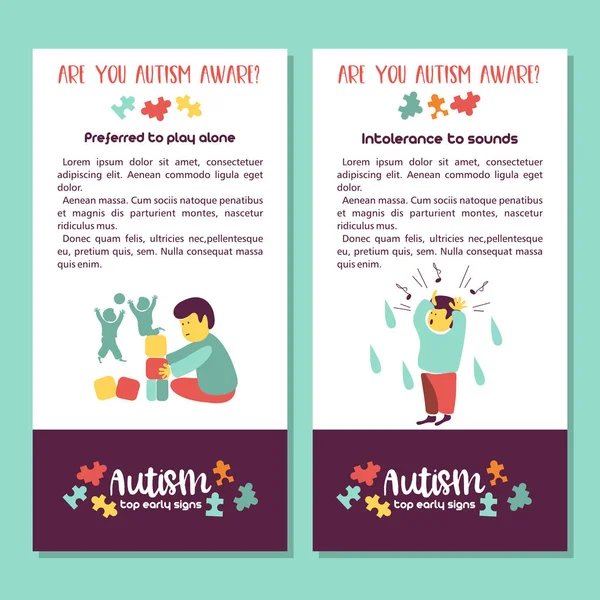 With careful attention to the baby, the earliest messengers of pathology can be seen already in infancy.
With careful attention to the baby, the earliest messengers of pathology can be seen already in infancy.
The first signs of autism in children at an early age are:
- refusal of tactile contacts - the child cries when he is picked up, turns away, bends, and calms down only after he is returned to the crib;
- passivity in response to parents' appeal, lack of attention, interest during adult communication;
- violent reaction to loud noises;
- indifference to bright, rattling, whistling and squeaking toys with which adults try to entertain the child;
- indifference to standard toys, attempt to play with unsuitable objects.
As children age, symptoms of autism may include:
- lack of speech at the age of 1.5–3 years with a rich vocabulary and understanding of adult conversation;
- echolalia - uncontrolled copying and repeated repetition of sounds uttered by another person;
- perseveration - "getting stuck" on some phrase, word that the child constantly repeats, or emotions, or tasks, while the baby tirelessly ponders the idea that has swallowed him, but does not take any steps towards achieving the goal;
- refusal to comply with the game rules specified by adults or peers, and this refusal is not motivated by the personal decision of the baby, his disagreement, he simply does not understand why any installations and restrictions are needed;
- Difficulties in perceiving other people's emotions: children with autism do not understand why other children laugh at some teacher's phrase or why a girl who has been pulled by a pigtail is crying; such children may not have access to humor, sarcasm, irony;
- lack of response to one's own name;
- unwillingness to look directly into the eyes when communicating, answering or addressing, including in situations with parents or other close people;
- lack of fear, apprehension in life-threatening or health-threatening circumstances;
- tantrums, violent expressions of emotions when the usual environment changes, when strangers appear, etc.
 ;
; - restless, restless sleep with frequent awakenings.
Children with autism prefer to be alone, do not participate in group activities, it is difficult to get them to do something together with other children. They try to leave, hide where they will not be touched. Such children come up with their own games, incomprehensible to their peers, and constantly play them. From the side of people around, the movements of an autistic child may seem strange, devoid of meaning.
In many series and films that show the life of people with ASD, autistic characters are presented as strange but brilliant characters who avoid communication, offend others with their directness, but show excellent results in their professional activities. In life, unfortunately, everything is different: most often, children with autism develop mental retardation due to impaired functions of the cerebral cortex. Studying is given to them with difficulty, they are not able to understand the patterns, learn the rules, delve into the solution of the problem.


